Ant Species
- Check below to learn about the different species of ants commonly found in the Post Falls and Spokane area.
Common Ants In The Post Falls and Spokane Area
Ants have adapted to live in almost every environment on Earth, from the hottest deserts to the deepest rainforests. The most common ants that invade houses here in the northwest are the carpenter ants and odorous house ants. (Sugar Ants) Most ant infestations can be eliminated with professional baits and liquid insecticides. In some severe cases, compromised wood may need to be replaced for a complete solution.
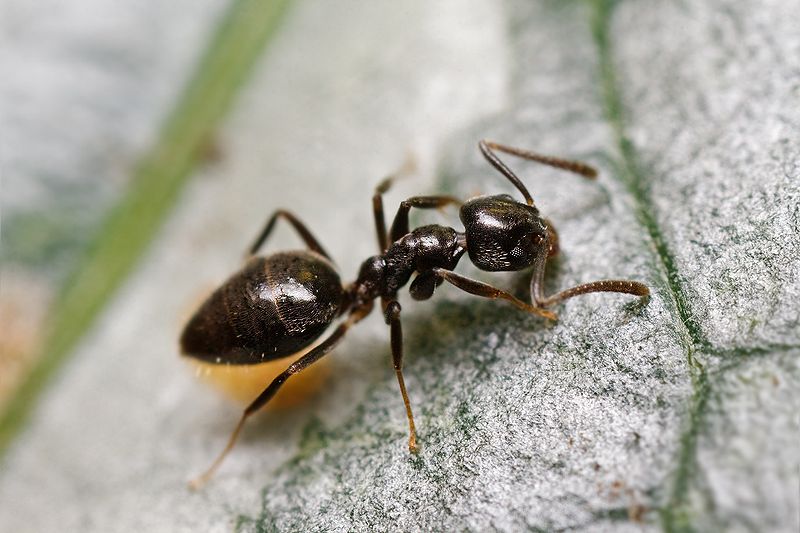
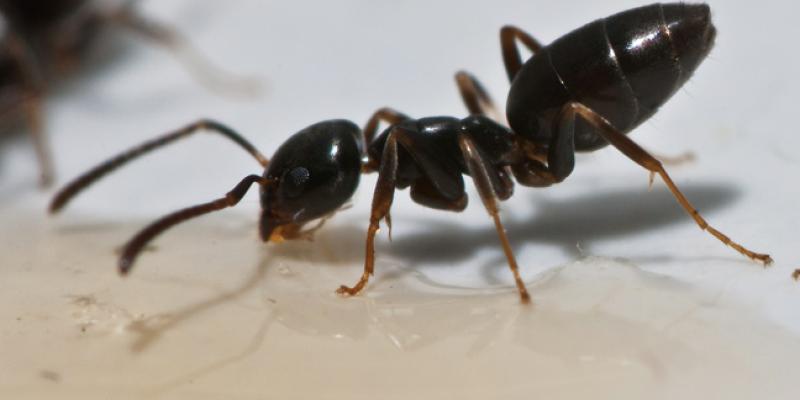
Odorous House Ants (Sugar Ants)
- Color: Brown – Black
- Size: 1/16 Inch
- Location: Around Sweets/Wall Voids
Small and dark brown to black, these ants are known for the strong, foul odor they release when crushed, often compared to a rotten coconut smell. They are typically found in kitchens, bathrooms, or other warm, moist areas inside homes. They are also commonly found near sweets in the home. Their nests are usually located in wall voids or under floors, and they can be difficult to control due to their large colonies and tendency to split into multiple nests. They are a monomorphic species meaning they are all the same size, about 1/16 of an inch in length.
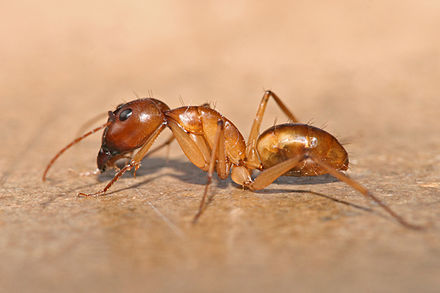
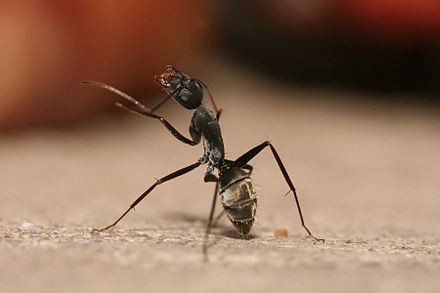
Carpenter Ants
- Color: Blackish – Red
- Size: ¼ – ½ Inches
- Location: Moist Wood
These large, dark-colored ants (black or reddish-black) are often found nesting in wood, particularly in decaying or moisture-damaged wood and then extending into sound wood. They don’t eat the wood but tunnel through it to create their nests. Carpenter ants tend to leave small piles of wood shavings near their entry points(Frass). Carpenter ants are polymorphic meaning the workers differ in size. Their workers are generally 1/4 to 1/2 inch long, and they have a distinct segmented body with a smooth thorax.
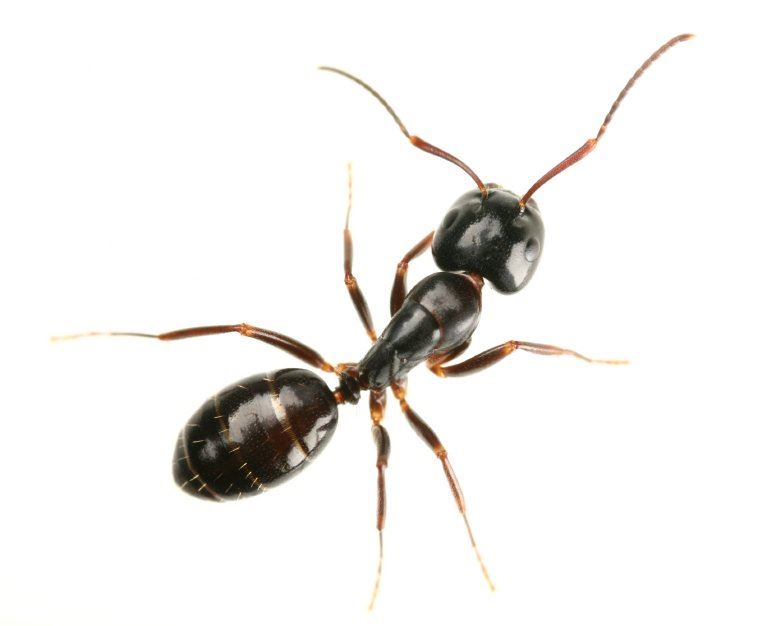
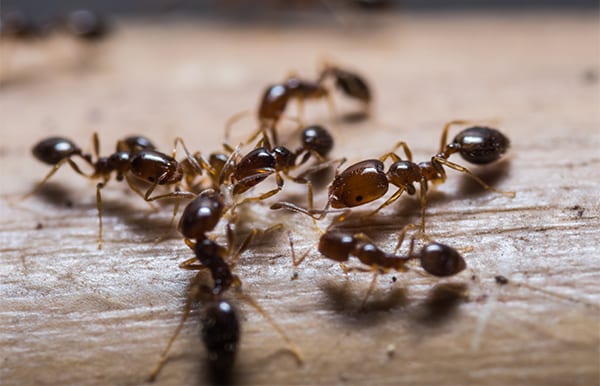
Moisture Ants
- Color: Yellow – Brow
- Size: ⅛ Inch
- Location: Moist Wood/Wall Voids
Moisture ants are usually yellowish-brown or dark brown and prefer to nest in damp, decaying wood. They are often found in areas with high moisture levels, like basements or under leaky plumbing. They are a monomorphic species meaning workers are all the same size. These ants are relatively small, typically around 1/8 inch long, and they leave behind a faint odor when disturbed. Their nests may be located inside walls or under flooring.
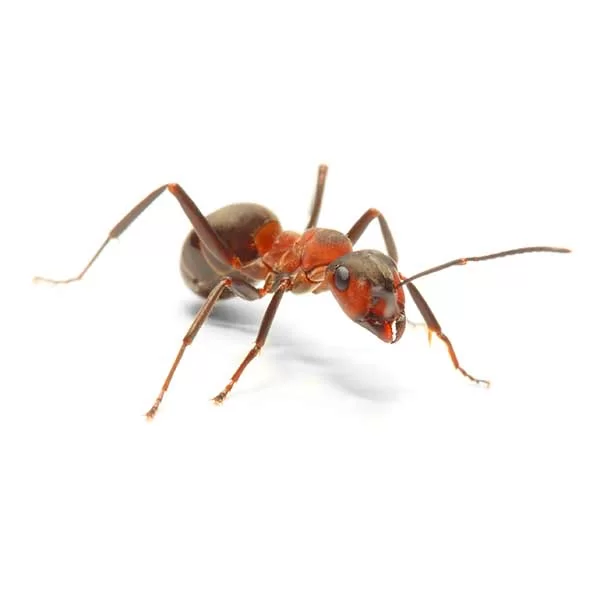
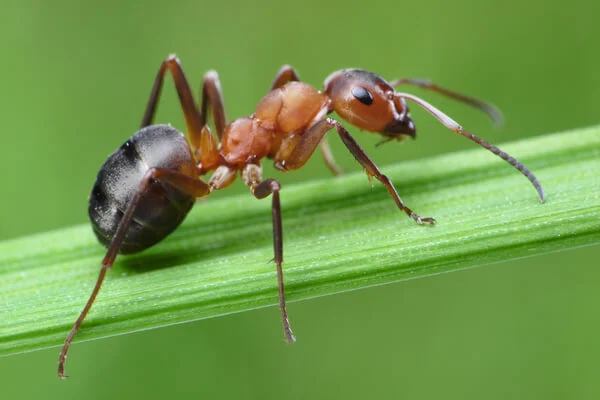
Thatching Ants
- Color: Red – Black
- Size: ⅕ – ⅜ Inch
- Location: Wooded Areas
Reddish-black in color, these ants are known for building large, conspicuous nests made of grass, leaves, and other debris. They are often found in wooded areas and are especially active during the warmer months. The mounds they create are usually quite noticeable and can range in size, with the ants actively guarding the entrance. Thatching ants can be aggressive if disturbed, and their sting can be painful. They are polymorphic meaning they vary in size from ⅕ – ⅜ inches.
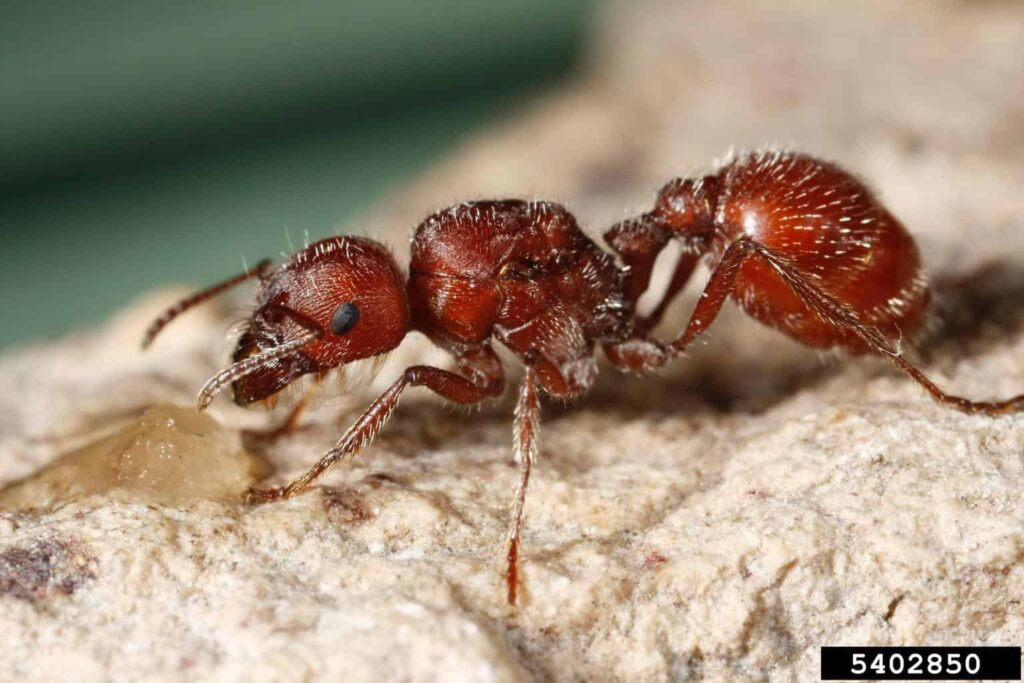
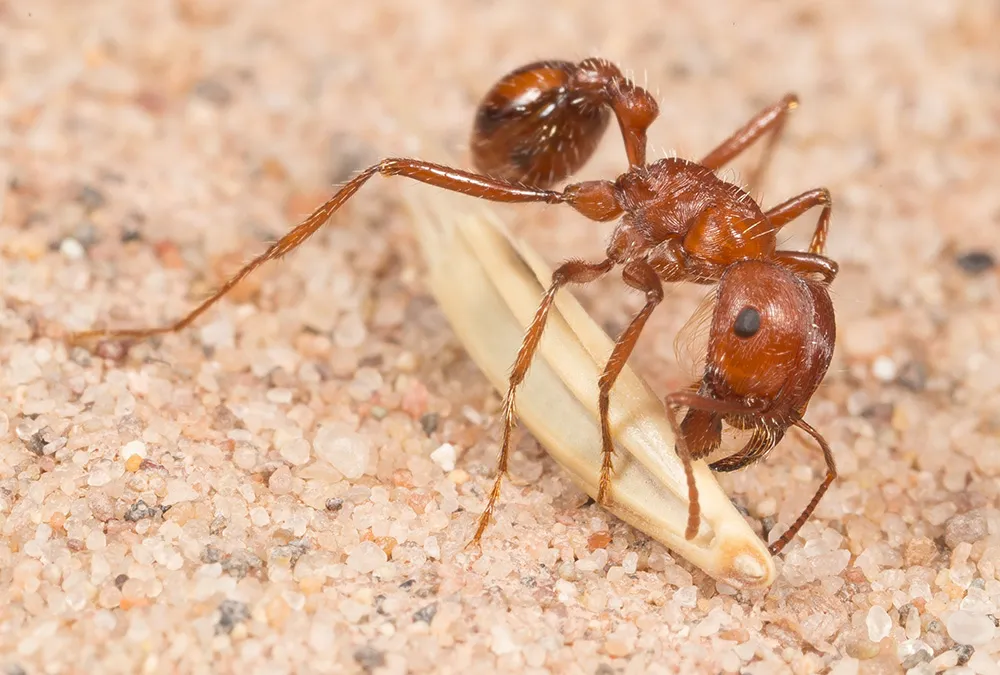
Harvester Ants
- Color: Red – Black
- Size: ¼ Inch
- Location: Open Dry Areas
The Harvester ant is the only ant in Washington & Idaho that can give a rather severe sting. These ants are typically large, with reddish or blackish bodies, and are known for collecting seeds to store in their nests. You’ll often see them carrying seeds back to their colonies, which are usually located in open, dry areas. Their nests are often marked by large circular holes, and the workers can be quite aggressive if their nests are threatened. Harvester ants are around 1/4 inch long and are monomorphic, meaning they are all the same size.
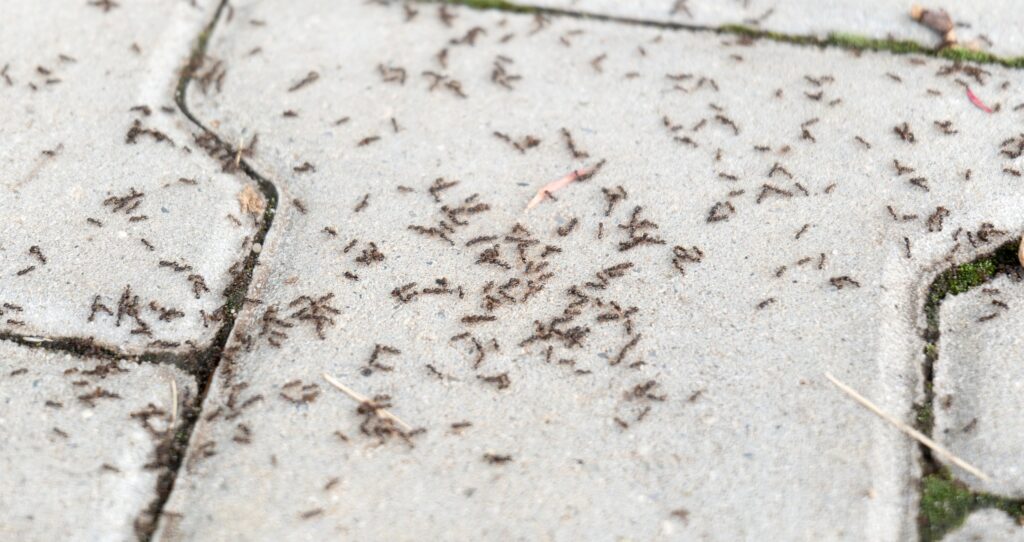
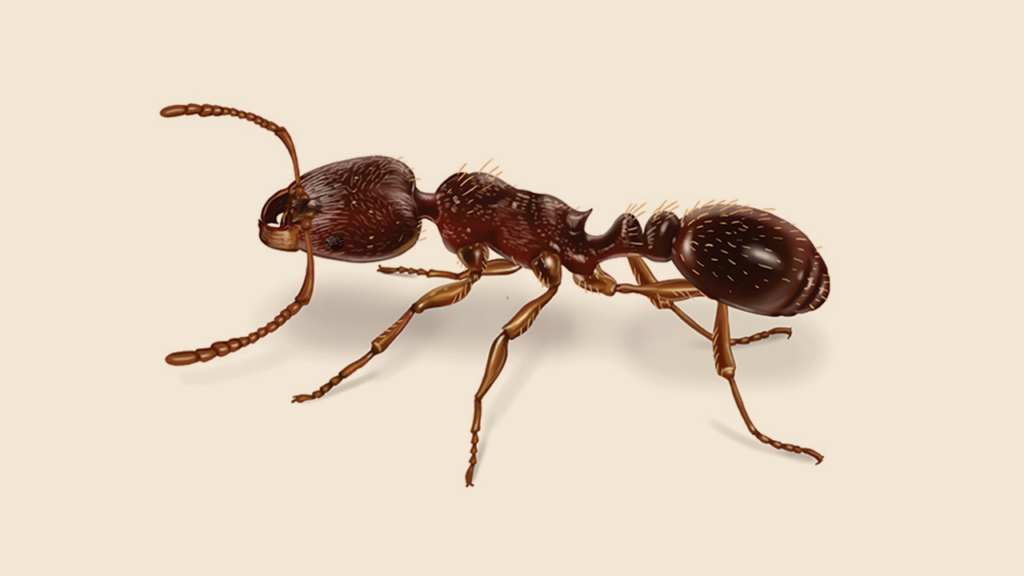
Pavement Ants
- Color: Brown – Black
- Size: ⅛ Inch
- Location: Rocks/Sidewalks
Pavement ants are small, black or brown ants commonly found in cracks in sidewalks, driveways, and other paved surfaces. They are monomorphic meaning they are all the same size, typically around 1/8 inch long and form nests in the soil beneath pavements. These ants can be found in urban environments and are known for their aggressive behavior when defending their nests. Their mounds are small but may be numerous in some areas.
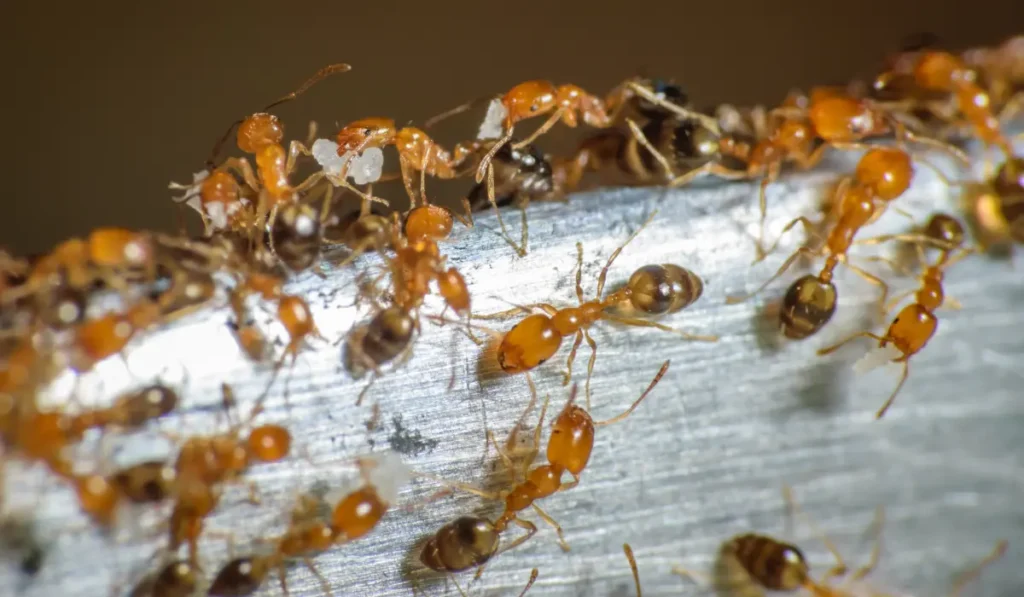
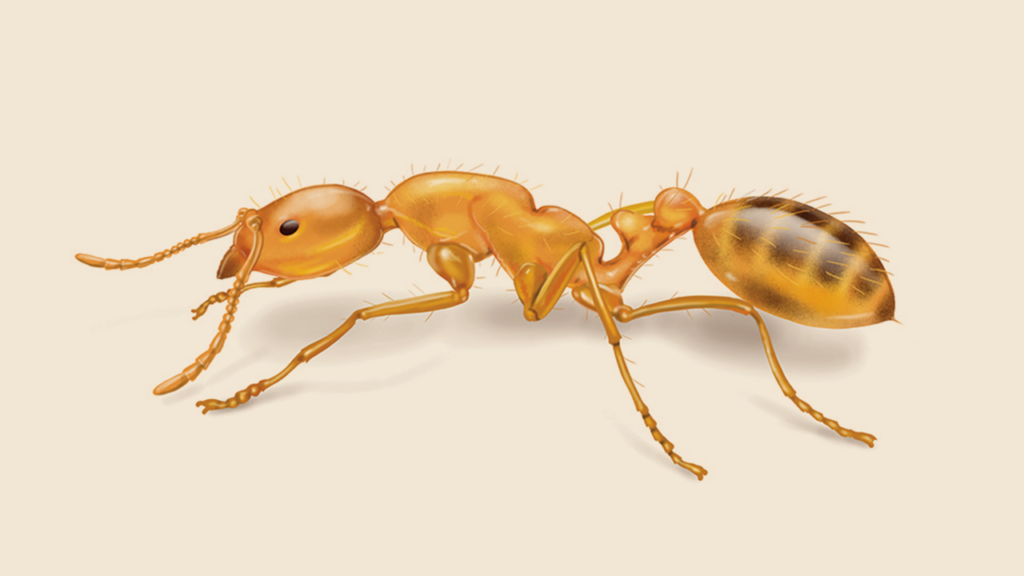
Pharaoh Ants
- Color: Yellow – Brown
- Size: ⅛ Inch
- Location: Around Grease/Appliances
Tiny, light yellow to light brown ants, Pharaoh ants are often found in warm indoor environments like hospitals, kitchens, and pantries. They are notorious for forming large, dense colonies and can be challenging to eliminate due to their ability to split into multiple smaller colonies when disturbed. These ants are monomorphic, meaning they are all one size, are about 1/16 inch long, and their nests are often located in hidden, moist areas like behind walls or under appliances. They have a food preference for grease, fats, and meats.
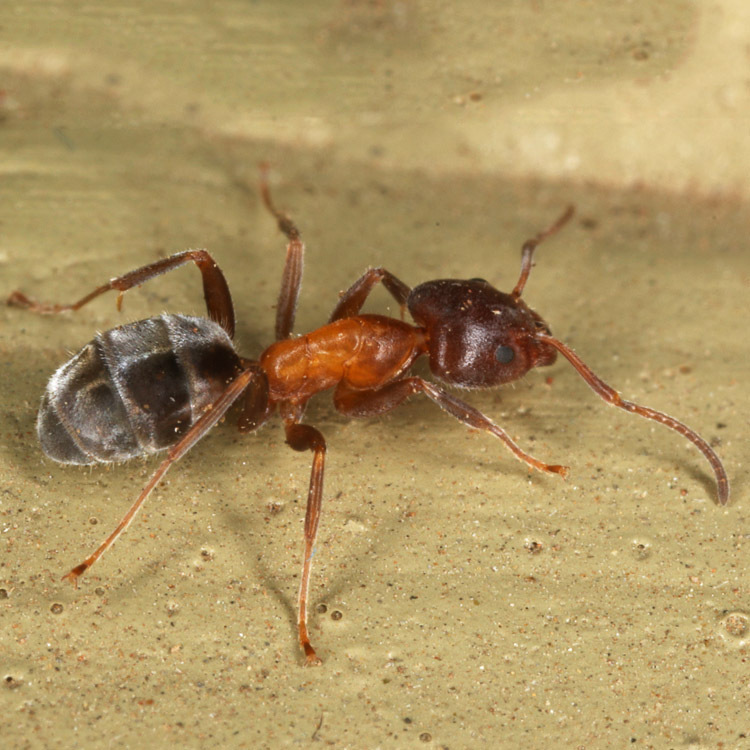
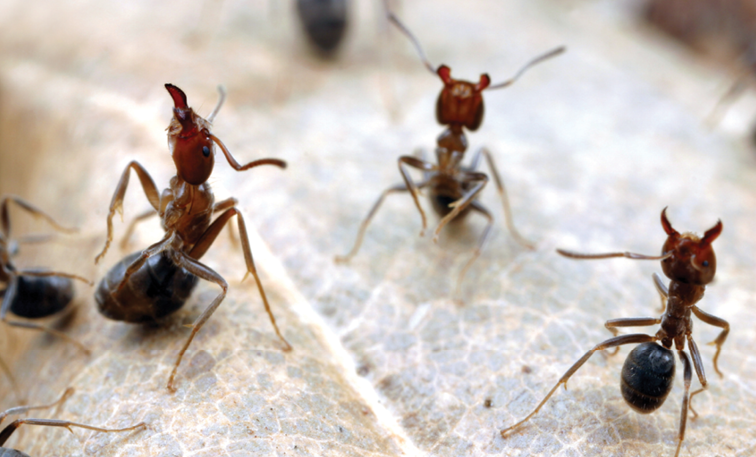
Velvety Tree Ants
- Color: Velvety – Black (Shiny)
- Size: ⅛ – ¼ Inch
- Location: Wooded Areas
These ants are black with a velvety appearance, which gives them their name, and are typically found in trees or tree trunks. They are somewhat larger than other species, with workers ranging from ⅛ – ¼ inch in length. Velvety tree ants are not commonly found indoors but are often seen on tree branches or around woody areas. Their nests are typically located in rotting wood or the hollow centers of trees.
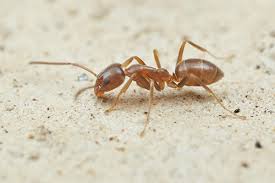
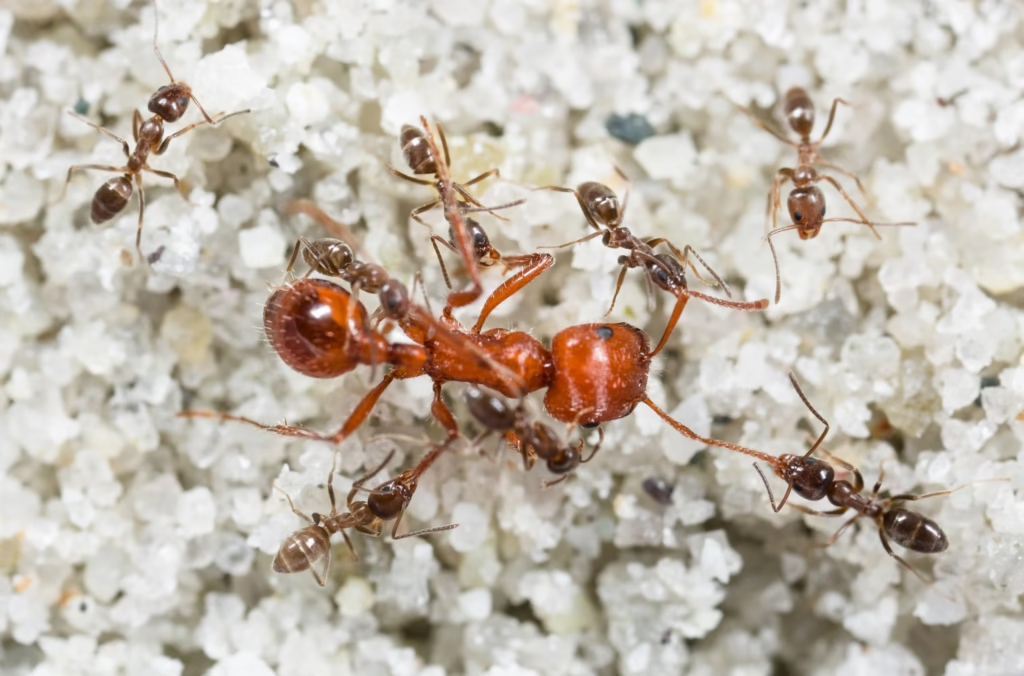
Argentine Ants
- Color: Brown
- Size: ⅛ Inch
- Location: Soil/Rocks
Small, light to dark brown ants, Argentine ants are known for forming massive supercolonies that can spread across vast areas. They are highly invasive and have a tendency to displace other ant species. Their nests are often found in soil, under rocks, or in cracks in pavement. Argentine ants have a smooth, uniform body and are monomorphic meaning they are all the same size, typically around 1/8 inch long. They are especially active in warm weather and can quickly establish large populations in homes and gardens.
ANT FAQ's
Are ants dangerous to humans?
Yes, some ants can be dangerous to humans. However here in the northwest, they are not, the worst you can get is a bite that is comparable to a bee sting.
How did ants get into my house?
Ants can access your house through many different locations. The typical ones are through doorways, windows, and the seam between your siding and foundation. They have also been seen trailing up tree limbs and making their way through soffits.
Will ant treatments be safe for my pets and kids?
Yes, when done by pest professionals who have the knowledge of how to use the products according to the label.
How long will it take to get rid of my ants?
This can differ depending on the type of ants and the colony’s size. Pest control professionals use a transferable product to ensure complete elimination of the whole colony. Typically it takes around 3-4 weeks for full effect.
Why do ants keep coming back?
The most common reason for ants coming back is using the wrong methods of control and having a food source for them to access. Lots of times over the counter pest control products don’t eliminate the entire colony.
What happens if I wait to get rid of ants?
Waiting to get rid of ants typically means control will be harder and take longer in the future. More Action Now = Less Action Later
Do I need ongoing pest control service for ants?
It usually depends on the environment that you live in and your tolerance for living with ants. If you want to make sure another ant never gets in your home then yes ongoing pest control would be the answer.

